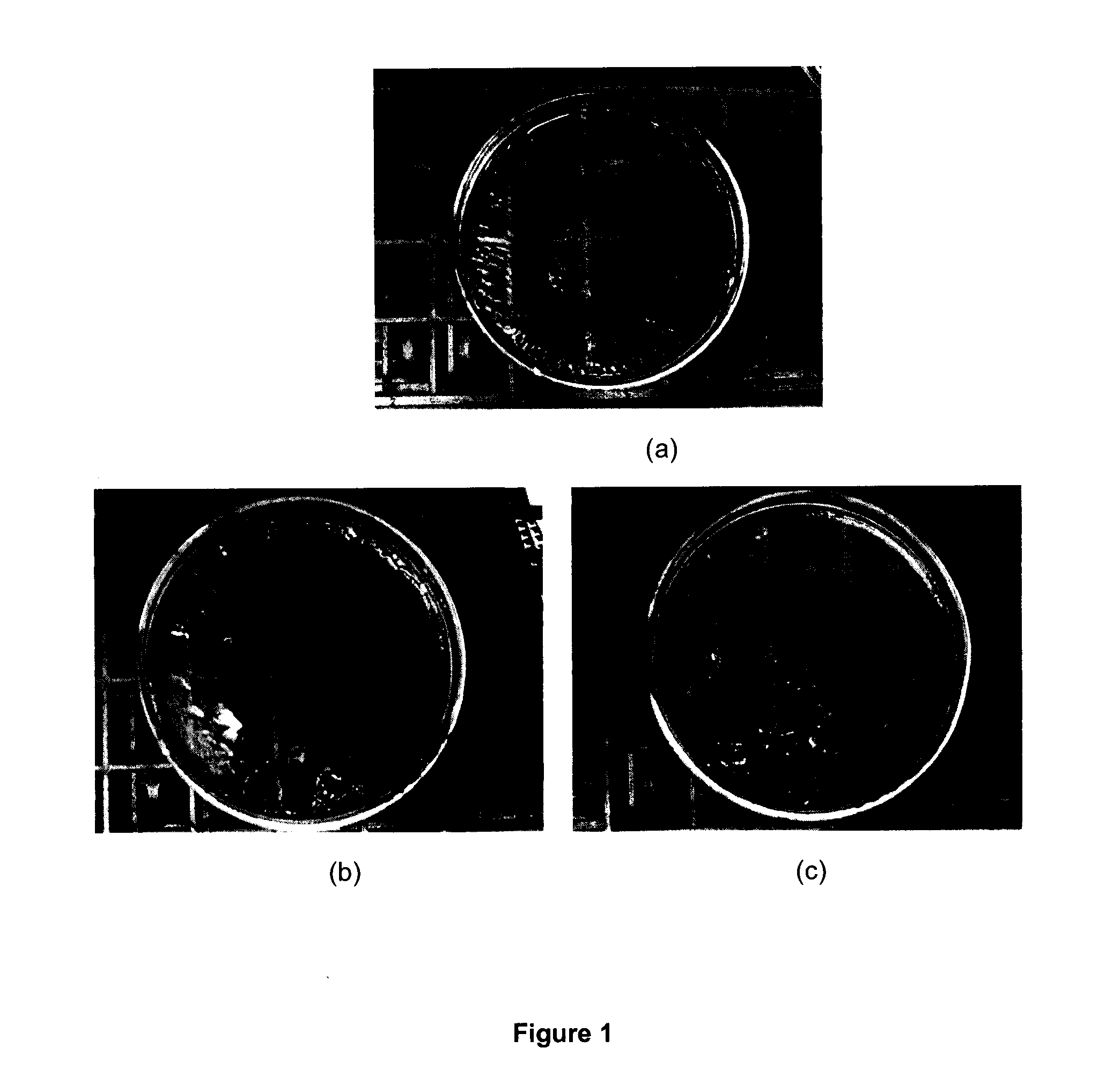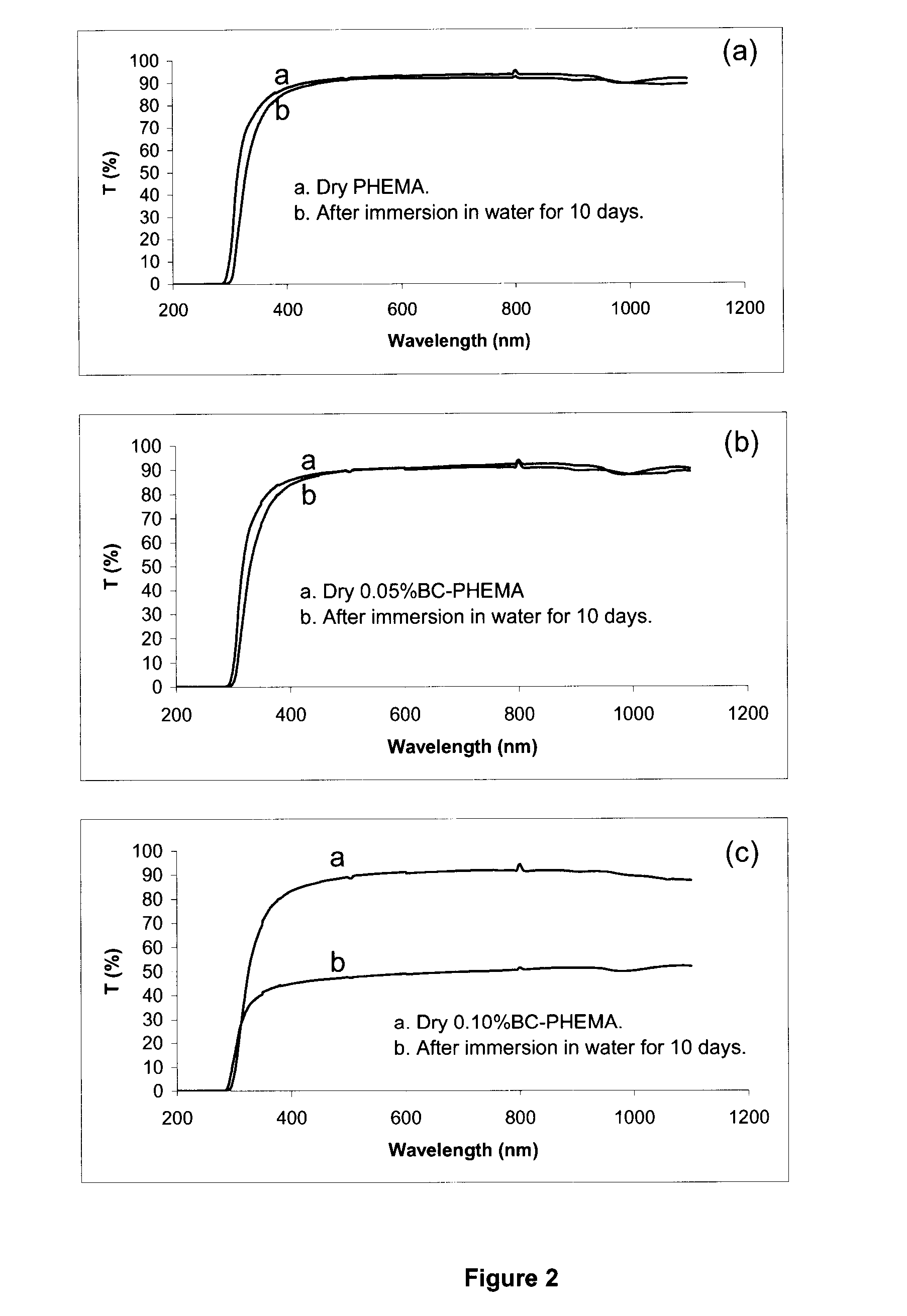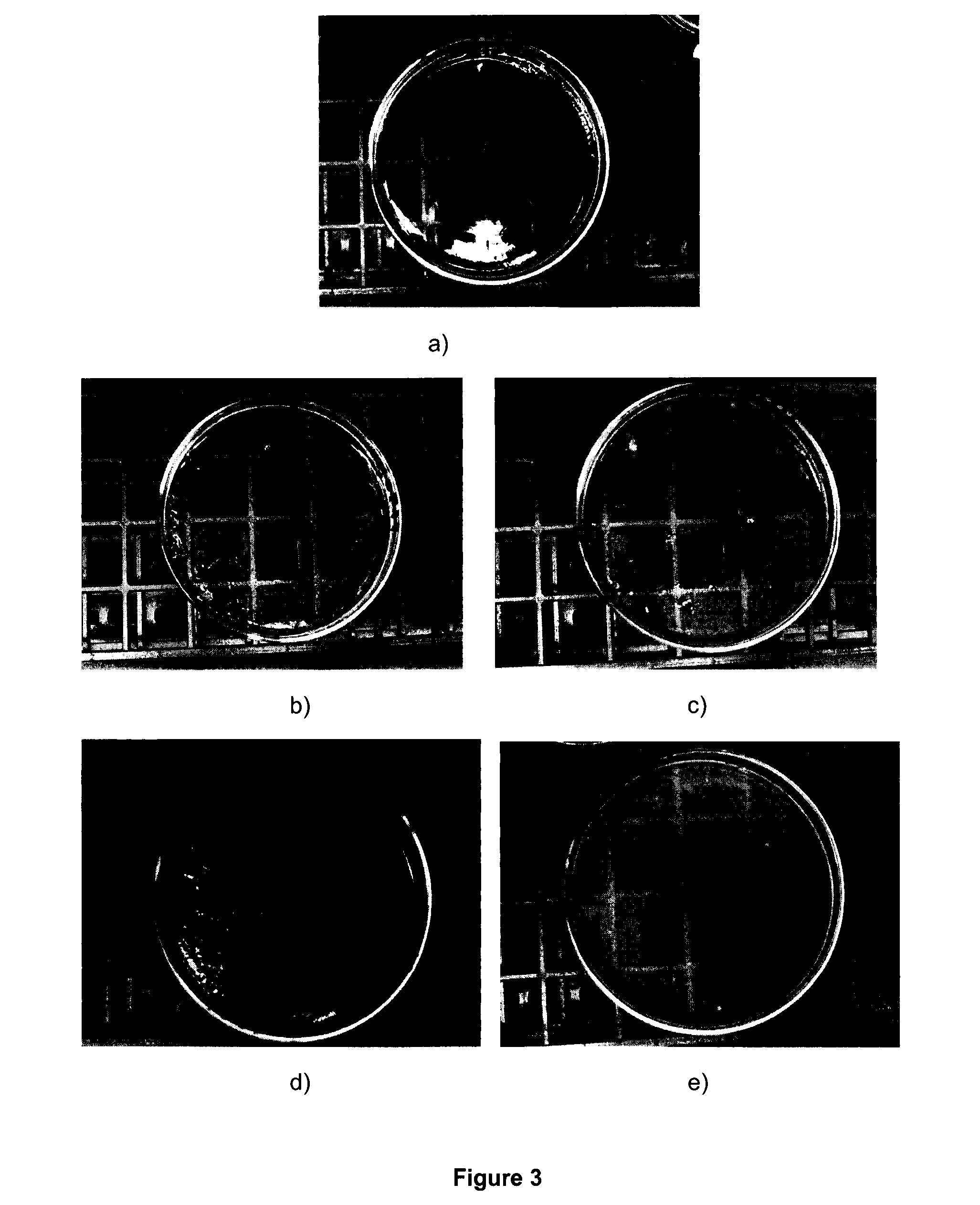Transparent bacterial cellulose nanocomposite hydrogels
a technology of cellulose nanocomposite and transparent hydrogel, which is applied in the field of transparent hydrogel, can solve the problems of poor mechanical strength of biomaterials, less durable products, and inability to improve both mechanical properties and water swelling content, and achieve the effect of improving mechanical strength and improving mechanical strength
- Summary
- Abstract
- Description
- Claims
- Application Information
AI Technical Summary
Benefits of technology
Problems solved by technology
Method used
Image
Examples
example
Synthesis of Bacterial Cellulose Transparent Nanocomposite Hydrogel
[0089]Preparation of polymer was carried out by free radical polymerization of HEMA directly onto a glass dish with a diameter of 9 mm. 10.0 g HEMA monomer, and 0.10 g BPO introduced into a glass vial, purged with nitrogen for 10 min. Closing the cap on the vial, and put the vial into a water bath, the liquid was pretreated with ultrasound for 2 hours and allow the final temperature reached at 40° C. The liquid was poured onto the glass dish, heated at 60° C. for 12 hours in the atmosphere of flow nitrogen. The obtained sample is transparent clear solid, as evidenced by the photo and UV measurement depicted in FIGS. 1 and 2. This dried sample was immersed in water for up to 10 days, allowing complete water swelling. Three pieces of water swelled sample sheet were used for calculating the water amount in the sample. Five film sheets were cut from the hydrogel sample for mechanical testing as shown in FIG. 6.
[0090]Prep...
PUM
| Property | Measurement | Unit |
|---|---|---|
| Temperature | aaaaa | aaaaa |
| Temperature | aaaaa | aaaaa |
| Fraction | aaaaa | aaaaa |
Abstract
Description
Claims
Application Information
 Login to View More
Login to View More - R&D
- Intellectual Property
- Life Sciences
- Materials
- Tech Scout
- Unparalleled Data Quality
- Higher Quality Content
- 60% Fewer Hallucinations
Browse by: Latest US Patents, China's latest patents, Technical Efficacy Thesaurus, Application Domain, Technology Topic, Popular Technical Reports.
© 2025 PatSnap. All rights reserved.Legal|Privacy policy|Modern Slavery Act Transparency Statement|Sitemap|About US| Contact US: help@patsnap.com



